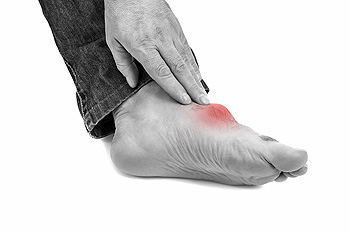How to Check If You Have a Bunion
Monday, 16 December 2019 00:00 Bunions are a particularly painful type of foot condition that form on the side of the feet. If you are experiencing foot pain, there are a few steps you can take in order to determine if a bunion is the cause of the discomfort. You may begin by examining your feet to look for a bony lump, or protrusion on the side of your big toe. Next, you’ll want to determine if your big toe is pointing, or leaning towards the rest of your toes. Lastly, you’ll want to check if the skin on the lump is hard, red or swollen. If you notice that all of the above are true to your case, it is very likely that you have a bunion. To relieve the pain of a bunion, it is recommended that you wear shoes wider than normal, ice the affected area on and off, look into wearing bunion pads to prevent further friction with your footwear, and try to keep the weight off of the affected area. Bunions are likely to worsen overtime, which is why we recommend you speak with a podiatrist for professional guidance and a suggested treatment plan.
Bunions are a particularly painful type of foot condition that form on the side of the feet. If you are experiencing foot pain, there are a few steps you can take in order to determine if a bunion is the cause of the discomfort. You may begin by examining your feet to look for a bony lump, or protrusion on the side of your big toe. Next, you’ll want to determine if your big toe is pointing, or leaning towards the rest of your toes. Lastly, you’ll want to check if the skin on the lump is hard, red or swollen. If you notice that all of the above are true to your case, it is very likely that you have a bunion. To relieve the pain of a bunion, it is recommended that you wear shoes wider than normal, ice the affected area on and off, look into wearing bunion pads to prevent further friction with your footwear, and try to keep the weight off of the affected area. Bunions are likely to worsen overtime, which is why we recommend you speak with a podiatrist for professional guidance and a suggested treatment plan.
If you are suffering from bunion pain, contact Dr. Robert Graser of Graser Podiatry and Bunion Surgery Institute. Our doctor can provide the care you need to keep you pain-free and on your feet.
What Is a Bunion?
Bunions are painful bony bumps that usually develop on the inside of the foot at the joint of the big toe. As the deformity increases over time, it may become painful to walk and wear shoes. Women are more likely to exacerbate existing bunions since they often wear tight, narrow shoes that shift their toes together. Bunion pain can be relieved by wearing wider shoes with enough room for the toes.
Causes
- Genetics – some people inherit feet that are more prone to bunion development
- Inflammatory Conditions - rheumatoid arthritis and polio may cause bunion development
Symptoms
- Redness and inflammation
- Pain and tenderness
- Callus or corns on the bump
- Restricted motion in the big toe
In order to diagnose your bunion, your podiatrist may ask about your medical history, symptoms, and general health. Your doctor might also order an x-ray to take a closer look at your feet. Nonsurgical treatment options include orthotics, padding, icing, changes in footwear, and medication. If nonsurgical treatments don’t alleviate your bunion pain, surgery may be necessary.
If you have any questions, please feel free to contact our office located in Boerne, . We offer the newest diagnostic and treatment technologies for all your foot care needs.
Featured Articles
- July 2024
- June 2024
- May 2024
- April 2024
- March 2024
- February 2024
- January 2024
- December 2023
- November 2023
- October 2023
- September 2023
- August 2023
- July 2023
- June 2023
- May 2023
- April 2023
- March 2023
- February 2023
- January 2023
- December 2022
- November 2022
- October 2022
- September 2022
- August 2022
- July 2022
- June 2022
- May 2022
- April 2022
- March 2022
- February 2022
- January 2022
- December 2021
- November 2021
- October 2021
- September 2021
- August 2021
- July 2021
- June 2021
- May 2021
- April 2021
- March 2021
- February 2021
- January 2021
- December 2020
- November 2020
- October 2020
- September 2020
- August 2020
- July 2020
- June 2020
- May 2020
- April 2020
- March 2020
- February 2020
- January 2020
- December 2019
- November 2019
- October 2019
- September 2019
- August 2019
- July 2019
- June 2019
- May 2019
- April 2019
- March 2019
- February 2019
- January 2019
- December 2018
- November 2018
- October 2018
- September 2018
- August 2018
- July 2018
- June 2018
- May 2018








